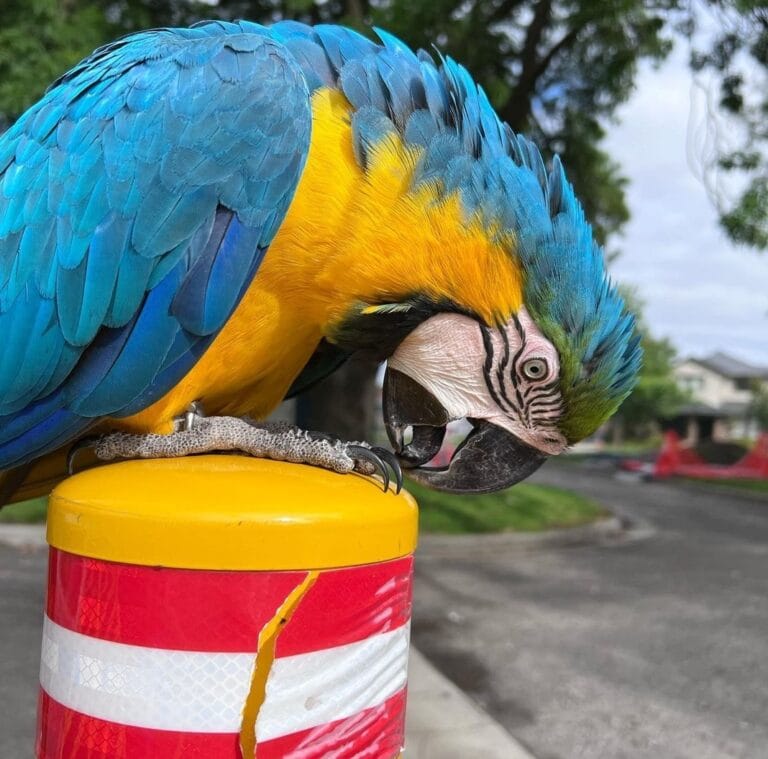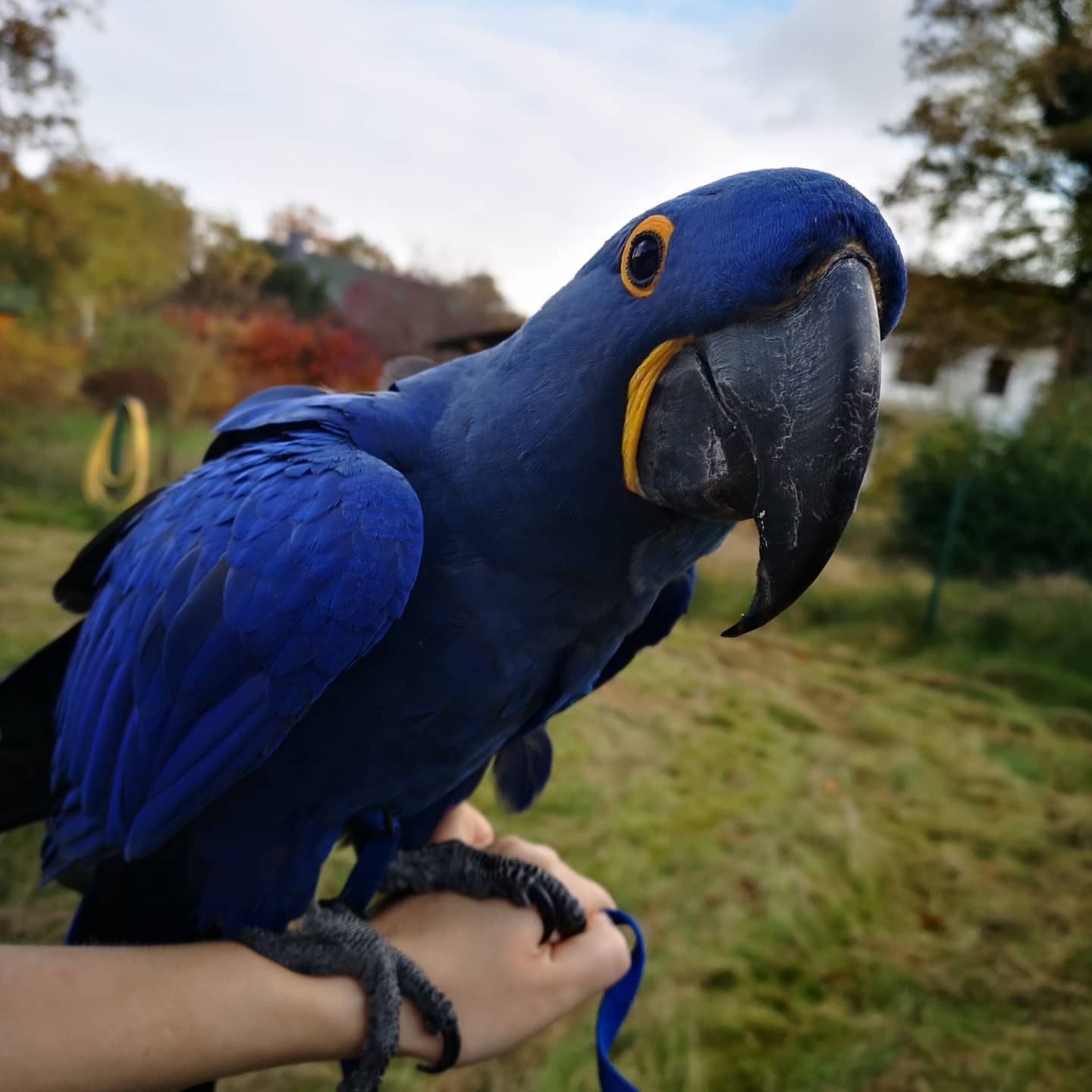Glaucous Macaw It's Not As Expensive As You Think

2025-02-27 11:51
28
0
본문
 Glaucous Macaw
Glaucous MacawThe glaucous hyacinth macaw cost is among the rarest birds in the world. It is in serious danger and could even be extinct.
A variety of aviculturalists have reported sightings of this bird However, the most recent sighting was in 1992. This alleged sighting occurred in the southwestern region of Paraguay close to the city of Corrientes. The bird was a male.
Origin
The Glaucous chestnut fronted macaw for Sale is a bird native to South America. It is threatened. This majestic bird is distinguished by blue feathers, and a strong beak capable of cracking open seeds and nuts. Glaucous Macaws form monogamous long-term couples, and both parents raise the chicks. The chicks are fed regurgitated food during the first few weeks of life before being fed solid food as the chicks develop. Parents are also responsible for teaching the young macaws to fly and hunt.
The glaucous Macaw is thought to be extinct in the wild, but rumors of this beautiful bird's existence continue to spread all over the world. It is believed that the glaucous Macaw was extirpated in the 1800s due to the logging industry and cattle grazing in yatay palm (Butia yatay) groves, where these birds primarily gathered their meals. It is believed that the glaucous macaw made a comeback in captivity and is usually raised alongside its larger relative, Lear's macaw for sale.
The glaucous Macaw is found in sub-tropical rainforests in South America. They are most often located in areas that have many palm trees. They are also highly adaptable to a variety of forest habitats. These beautiful birds can be territorial and will protect the feeding and nesting area from intruders.
There have been a variety of reports involving the glaucous macaw over the years, but many are considered to be unreliable. The most recent claim of a wild occurrence involves a avicultural acquaintance of Ridgely's who claimed to have witnessed four Glaucous macaws in Califomia. This is a completely absurd claim until it can be verified with solid evidence. Many experts have concluded that this bird is likely extinct as there are no records in the last century. However they have always been willing to accept a small chance of its survival. If it is able to survive, it is extremely unlikely to make it to large numbers.
Habitat
The macaw glaucous is an impressive bird that is renowned for its large size and dazzling turquoise-blue coloring. The long tail and wings highlight its graceful and agile moves. It is also a symbol of love and loyalty. Its beak is predominantly black, and it has a distinctive shape that allows it to break open seeds and nuts which constitute a significant portion of its diet.
The Glaucous Macaw is considered Critically Endangered by the IUCN and the IUCN states that it has an extremely small population and is at a significant danger of disappearing. This species was once widespread but is now found in northern Argentina, where to buy Macaws south Paraguay and north-eastern Uruguay and Brazil and Brazil from Parana state to south, where it resides in cliffs that run alongside major rivers.
The Glaucous Macaw was not rare in its limited area, despite the fact that there was no evidence of sightings since 1830. Specimens were collected up until 1850 (in Corrientes). The last known living Glaucous Macaw was displayed at the Buenos Aires Zoo in 1936 and is believed to be from Brazil.
Re-evaluation of the historical documents suggests that this species was very generalist in its habitat preferences, with a preference for savanna habitat intermingled with palm "islands" and bands of riparian forest along river systems. It was a particular for the consumption of palm fruits especially those of the yatay (or chatay) palm (Butia). However, it also ate ripe or unripe fruits and berries, nuts, and other vegetable matter. It nests on slopes that are steep, in cliffs and sometimes in tree cavities.
This bird was likely to be gregarious and social, similar to other parrots. It was able to live up to 14.8 years in captivity. It was said to be a dependable breeder, reproducing year after year. Its life expectancy in the wild was perhaps about 50 to 80 years. This species was a powerful seed disperser and could have contributed to the success of the yatay palm within its natural habitats.
Feeding
The Glaucous Macaw is one of the most beautiful parrots. Its presence has a strong impact on its environment. This massive South American bird is known for its vivid blue feathers and yellow eyes, as well as the distinctive teardrop-shaped lipped sleeve that covers the lower part of its beak.
In the past, little was known about the feeding habits of the Glaucous Macaw. The first detailed references I have located are two works by H.W. Bates' "The Naturalist on the amazons" first published in 1863, describes his 11-year journey in Brazil. In his later book "As Birds of the Brazilian Forests" Bates wrote about the similar experience. Both are about the Hyacinthine Macaw Anodorhynchus Aureolarius. I have no reason to believe that they don't apply to this species.
It is likely that the Glaucous Macaw was a specialist feeder of palm nuts and also consumed other seeds, fruits and vegetable matter in small quantities. The diet of this species is likely to be influenced by the clearance of forests by the early colonists for agriculture and cattle ranching and the destruction of the yatay palm (Butia yatay) from which it may have received much of its diet.
In the wild in the wild, the Glaucous Macaw was commonly found in subtropical forests that had mountains and savannahs that were surrounded by palm trees, where it nested in tree cavities, on rocky banks, or in the palm fronds' top. The female incubates and then lays two eggs on average.
The young Glaucous Macaws are altricial, meaning they rely on their parents to look after them until they become fully grown and able to fly. Both the males and females are very dedicated to their offspring, and will hunt for food and protect them against predators.
Unfortunately, the Glaucous Macaw has been extirpated from its entire previous range. The disappearance of this magnificent bird is most likely due to the ongoing trapping of pets for the pet trade as well as disturbance to habitat, specifically the mass removal of yatay palms which it may have obtained its main food supply. The Glaucous Macaw is listed as Critically Endangered.
Breeding
Glaucous macaws are typically monogamous couples, with both parents playing part in raising the young. They breed in the dry season, which is when food is plentiful. The female lays an egg clutch that ranges from two to three eggs that are incubated for around 28 days. In the initial few weeks after hatching, the chicks are fed daily by their parents through regurgitation. The young macaws then begin to explore their surroundings and learn to feed themselves. They also learn how to fly and forage.
Like all birds, glaucous Macaws are highly social creatures. They are active during daylight hours, and rest at night. At night, they will often seek shelter inside tree cavities or other suitable nesting places. They are very vocal and their calls can be heard throughout the forest during the day.
The species is expected to recover from the decline, however it faces many threats including habitat loss, illegal trapping of the bird to sell on the pet market and deforestation. Only about 20 glaucous Macaws are estimated to be living in the wild. The IUCN classifies the bird as "Critically Endangered, possibly extinct."
The glaucous macaw, sometimes referred to as Lear's Macaw or blue-throated Hummingbird is distinguished by its bright blue feathers. It is a large bird, with a length of 70 centimeters, and has a strong beak that can crack open seeds and nuts that are tough to break. This gorgeous bird is native to South America, and it is found in a variety of habitats, including forests, dry lowland grasslands, and wetland.
This magnificent bird is a symbol of South American biodiversity. Its appearance is elegant with its slim body, light weight and bright blue feathers. Its black and curved beak allows it to break open nuts and seeds, which make up a significant part of its diet. It is buying a macaw beautiful bird that is often seen in bird shows. It is also popular in captivity, where to buy macaw it can live for a lifetime.


댓글목록0